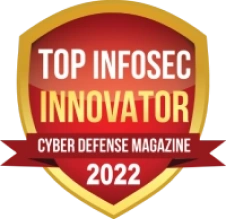What is Managed Detection and Response (MDR)?
Managed Detection and Response (MDR) is a cybersecurity service that combines advanced threat detection, continuous monitoring, and rapid incident response to protect organizations from cyber threats. Unlike traditional security solutions that rely on automated alerts, MDR integrates expert human analysis with AI-driven threat intelligence to detect, investigate, and neutralize threats before they cause harm. The key objectives of MDR include proactive threat hunting, real-time threat detection, rapid response to security incidents, and continuous improvement of security defenses. By leveraging a team of security professionals and cutting-edge technologies, MDR ensures businesses can stay ahead of evolving cyber threats without needing an in-house Security Operations Center (SOC).
Despite its benefits, businesses face several challenges when adopting MDR. One major concern is cost, as MDR services often require a significant investment. However, organizations can mitigate this by selecting an MDR provider that offers flexible pricing models tailored to their specific needs. Another challenge is integration with existing security tools and IT infrastructure. Many businesses fear that adopting MDR will require an overhaul of their current security stack. The best way to address this is by choosing an MDR solution that seamlessly integrates with existing SIEM, EDR, and firewall solutions. Additionally, the cybersecurity skills gap is a growing problem, making it difficult for organizations to build and maintain an in-house security team. MDR helps bridge this gap by providing access to highly skilled security analysts and incident responders, ensuring continuous protection without the need for additional internal resources.
The MDR lifecycle follows a structured approach to identifying, investigating, and mitigating cyber threats. The first step is detection, where MDR continuously monitors network traffic, endpoints, and cloud environments for signs of suspicious activity. Next, the investigation phase involves analyzing threat intelligence and security alerts to determine the nature and severity of the threat. If a legitimate threat is identified, the response phase is activated, where security experts take immediate action to contain and neutralize the attack. This could involve isolating infected devices, blocking malicious IP addresses, or deploying patches to close security vulnerabilities. Finally, the recovery phase focuses on restoring systems to normal operations and implementing lessons learned to strengthen future defenses. MDR providers also conduct post-incident analysis to refine detection techniques and improve response strategies. By following this step-by-step approach, MDR delivers a comprehensive cybersecurity solution that enhances resilience against cyber threats.
MDR vs Traditional Security Services: Filling the Gaps
Traditional security solutions like Security Information and Event Management (SIEM), Endpoint Detection and Response (EDR), and in-house Security Operations Centers (SOC) provide critical cybersecurity capabilities, but they also have significant limitations. SIEM solutions rely on log collection and automated alerts, but they often generate a high volume of false positives, requiring skilled security analysts to sift through the data to identify real threats. Without 24/7 monitoring and expert analysis, critical threats can go undetected. EDR solutions focus on endpoint-level threats but may lack the broader visibility needed to detect sophisticated attacks that span networks, cloud environments, and other attack surfaces. In-house SOC teams, while effective in some organizations, are costly to build and maintain, requiring highly skilled personnel who are in short supply. Many businesses struggle to retain cybersecurity talent, leading to gaps in security coverage. Additionally, traditional security solutions tend to be reactive rather than proactive, detecting threats only after they have already infiltrated the system.
Managed Detection and Response (MDR) fills these gaps by providing a more comprehensive and proactive approach to cybersecurity. Unlike SIEM, which relies on log analysis, MDR combines real-time monitoring with proactive threat hunting conducted by experienced security analysts. This means that instead of just reacting to alerts, MDR actively searches for indicators of compromise before an attack fully develops. MDR also surpasses EDR by offering full visibility into an organization’s entire attack surface, including endpoints, cloud environments, and network traffic. This holistic approach ensures that threats are detected and mitigated no matter where they originate.
One of the biggest advantages of MDR over traditional SOC teams is access to 24/7 expert monitoring and rapid incident response. Many in-house teams lack the resources to provide round-the-clock security coverage, making them vulnerable to attacks that occur outside business hours. MDR providers operate continuously, ensuring that any suspicious activity is immediately investigated and remediated. Furthermore, MDR services include specialized security expertise that many organizations lack internally. Cybersecurity analysts, threat hunters, and incident responders work together to analyze threats, contain attacks, and prevent future breaches. By leveraging this combination of human expertise and advanced security technology, MDR delivers a faster and more effective response to cyber threats than traditional security approaches. This makes it a valuable solution for businesses looking to enhance their security posture without the complexity and cost of managing a dedicated security team.
The MDR Framework: Understanding the Key Components
A robust Managed Detection and Response (MDR) service is built on several core components that work together to provide continuous threat monitoring, proactive detection, and rapid incident response. One of the most critical elements of an MDR solution is 24/7 monitoring, which ensures that security analysts are always watching for suspicious activity across an organization’s network, endpoints, and cloud environments. Cyber threats can emerge at any time, and having around-the-clock monitoring allows for immediate detection and response, reducing the risk of prolonged exposure. Another key component is threat intelligence, which involves collecting and analyzing data from various sources to identify emerging cyber threats. By leveraging global threat intelligence, MDR providers can anticipate attacks and enhance detection capabilities based on real-world attack patterns.
Incident response is another essential aspect of MDR, ensuring that security teams can rapidly contain and neutralize threats before they cause damage. Unlike traditional security approaches that rely solely on automated alerts, MDR includes human expertise to assess and respond to incidents in real time. This combination of advanced technology and expert analysis helps organizations minimize downtime, reduce the impact of cyberattacks, and strengthen their overall security posture. Additionally, proactive threat hunting sets MDR apart from traditional security services. Instead of waiting for alerts, security analysts actively search for hidden threats and vulnerabilities within the environment, stopping attacks before they escalate.
MDR is powered by a combination of advanced security technologies, each playing a critical role in the detection and response process. Endpoint Detection and Response (EDR) is a foundational technology that provides visibility into endpoint activity, allowing MDR analysts to detect suspicious behaviors and isolate compromised devices. Security Information and Event Management (SIEM) collects and analyzes logs from multiple sources, helping security teams identify anomalies and detect complex attack patterns. Security Orchestration, Automation, and Response (SOAR) enhances MDR by automating incident response workflows, enabling faster remediation and reducing manual effort. Extended Detection and Response (XDR) takes MDR capabilities even further by correlating security data across endpoints, networks, email, and cloud environments to provide a unified view of threats.
Artificial intelligence (AI) and machine learning (ML) play a crucial role in modern MDR solutions by enhancing threat detection, reducing false positives, and automating security analysis. AI-driven algorithms can quickly identify patterns in large datasets, enabling security teams to detect emerging threats faster and more accurately. By leveraging these advanced technologies alongside human expertise, MDR provides a comprehensive and adaptive security solution capable of defending against today’s most sophisticated cyber threats.
MDR’s Impact on Modern Cybersecurity Strategies
Managed Detection and Response (MDR) has a profound impact on modern cybersecurity strategies by significantly improving threat detection and response times. One of the key benefits of MDR is its ability to reduce dwell time, which is the duration a threat remains undetected within an organization’s environment. Traditional security solutions often struggle with delayed threat detection due to alert fatigue, lack of skilled personnel, and reliance on reactive measures. MDR overcomes these challenges by combining 24/7 monitoring, AI-driven analytics, and expert threat hunters who continuously search for hidden threats. This proactive approach ensures that cyber threats are identified and contained before they can cause serious damage.
Real-world examples highlight MDR’s effectiveness in minimizing the impact of cyberattacks. In many cases, businesses that implemented MDR have successfully detected ransomware infections at an early stage, preventing attackers from encrypting critical data. Similarly, MDR has helped organizations thwart advanced persistent threats (APTs) by identifying unusual network activity that traditional tools would have missed. By responding to incidents within minutes rather than hours or days, MDR reduces downtime, protects sensitive information, and mitigates financial and reputational damage.
Beyond improving threat detection, MDR plays a crucial role in enhancing security posture and ensuring compliance with regulatory requirements. Organizations handling sensitive data must adhere to compliance frameworks such as GDPR, HIPAA, PCI DSS, and ISO 27001, which mandate strict security controls and incident response procedures. MDR services help businesses meet these requirements by providing continuous security monitoring, detailed audit logs, and incident response documentation that regulatory bodies demand.
Additionally, MDR improves overall security resilience by identifying vulnerabilities and weaknesses in an organization’s IT infrastructure. By leveraging threat intelligence and attack simulations, MDR providers help businesses strengthen their defenses against emerging threats. This proactive approach allows organizations to stay ahead of cybercriminals rather than reacting after an attack has already occurred.
MDR also reduces the burden on internal security teams, allowing businesses to focus on their core operations while maintaining a high level of protection. For companies that lack the resources to build and maintain a dedicated Security Operations Center (SOC), MDR serves as a cost-effective alternative, providing access to top-tier security expertise without the overhead costs of hiring in-house analysts.
By integrating MDR into their cybersecurity strategy, businesses gain faster threat detection, improved compliance, and a stronger overall security posture, making it a critical component of modern cyber defense.
Calculating the ROI of MDR
Calculating the return on investment (ROI) of Managed Detection and Response (MDR) involves measuring its impact on cybersecurity effectiveness, operational efficiency, and financial savings. Unlike traditional security solutions that rely solely on automated alerts, MDR combines advanced technology, expert analysis, and proactive threat hunting to prevent costly cyber incidents. To quantify the value of MDR, organizations must assess how it reduces incident response times, minimizes breach-related costs, and strengthens overall security posture. By preventing data breaches, business disruptions, and compliance violations, MDR delivers a measurable return that outweighs its cost.
One of the most effective ways to measure MDR’s ROI is by tracking key performance indicators (KPIs) that demonstrate its success. One critical KPI is mean time to detect (MTTD), which measures how quickly threats are identified. Traditional security teams may take weeks or months to detect a breach, whereas MDR providers often reduce this timeframe to minutes or hours, significantly limiting the damage. Another crucial KPI is mean time to respond (MTTR), which reflects how quickly an organization can contain and neutralize a threat. A faster response directly correlates to reduced financial and operational impact. Additionally, businesses should track dwell time, the length of time an attacker remains undetected within the network. MDR services drastically shorten dwell time, preventing cybercriminals from escalating attacks.
Financial metrics such as cost per incident, breach recovery expenses, and compliance-related fines should also be factored into MDR’s ROI calculations. A successful MDR implementation helps organizations avoid ransomware payouts, legal fees, and reputational damage that often result from security incidents. By reducing the likelihood of breaches, MDR also helps organizations lower their cyber insurance premiums, leading to long-term cost savings.
Justifying the investment in MDR to senior management requires building a strong business case that highlights its financial and operational benefits. Organizations should present MDR as a strategic investment rather than a cost, emphasizing its role in preventing revenue loss due to downtime, legal liabilities, and data breaches. Using case studies or industry benchmarks, businesses can showcase how MDR outperforms traditional security measures, making it a necessary addition to their cybersecurity strategy. Additionally, MDR alleviates the burden on in-house IT teams, reducing hiring and training costs for specialized security personnel.
Ultimately, MDR’s ROI is demonstrated through faster threat detection, lower breach recovery costs, and improved compliance. By investing in MDR, businesses gain a cost-effective security solution that not only protects critical assets but also strengthens long-term financial stability.
The Future of MDR: Emerging Trends and Technologies
The future of Managed Detection and Response (MDR) is being shaped by emerging technologies and evolving cybersecurity threats. As cybercriminals become more sophisticated, MDR providers are leveraging artificial intelligence (AI) and machine learning (ML) to enhance threat detection, automate response actions, and predict potential attack patterns. AI-powered threat detection reduces false positives and enables security teams to focus on real threats, while ML algorithms continuously refine security models based on new attack data. This proactive approach allows MDR to stay ahead of evolving threats, making security defenses more adaptive and resilient. Additionally, AI-driven automated incident response helps reduce response times by enabling real-time containment and remediation, significantly limiting the impact of cyberattacks.
Another major shift in MDR is the rise of Extended Detection and Response (XDR) and Modern Detection and Response (MXDR), which take MDR’s capabilities even further. While traditional MDR primarily focuses on endpoints and network activity, XDR integrates data across multiple security layers, including email, cloud, identity, and applications, to provide a unified security view. MXDR builds on this by incorporating automated response mechanisms and deeper security intelligence, making threat detection and response faster and more effective. These advancements ensure that businesses can defend against sophisticated, multi-vector attacks that target various entry points within an organization.
As organizations increasingly migrate to the cloud, MDR is playing a crucial role in cloud security. Cloud environments introduce new attack surfaces and risks, including misconfigurations, identity-based threats, and supply chain vulnerabilities. MDR providers are adapting to these challenges by integrating cloud-native security monitoring, allowing businesses to detect and mitigate threats across hybrid and multi-cloud infrastructures. By combining cloud security posture management (CSPM) and real-time monitoring, MDR ensures that organizations can maintain strong cloud security without sacrificing agility and scalability.
MDR is also becoming an essential component of Zero Trust security architectures. Traditional security models assume that threats exist outside the network, but Zero Trust operates on the principle of never trust, always verify. MDR complements Zero Trust by providing continuous monitoring, real-time threat intelligence, and rapid response to detect and eliminate threats both inside and outside the organization. By integrating with identity and access management (IAM), multi-factor authentication (MFA), and micro-segmentation, MDR enhances Zero Trust strategies by ensuring that threats are identified and contained before they can escalate.
As MDR continues to evolve, businesses can expect more automation, deeper threat intelligence, and broader security integration to combat emerging cyber threats. With advancements in AI, XDR, cloud security, and Zero Trust, MDR will remain a critical defense mechanism in the fight against modern cyberattacks.






